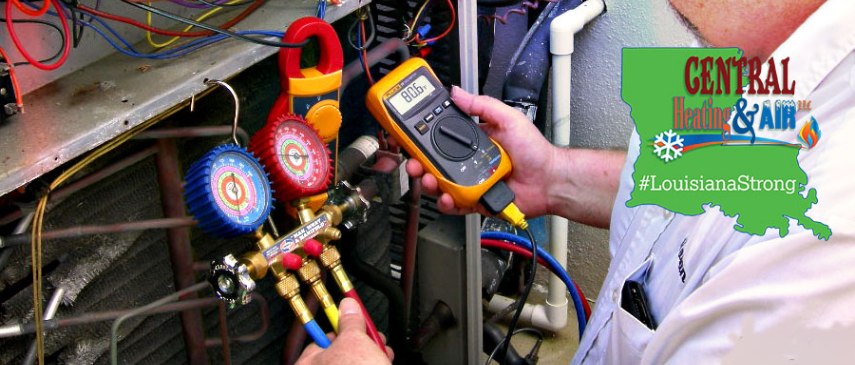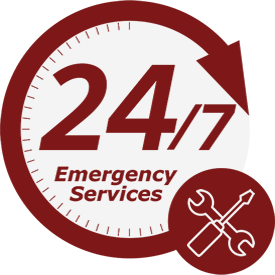The recent floodwaters in Louisiana have dealt a devastating blow to over 100,000 homes and structures in the Greater Baton Rouge area. A significant portion of the homes affected have an air conditioning unit that was either exposed to several inches of water, or even completely submerged.
Now that many homeowners are finishing up the gutting and cleaning phase, we at Central Heating & Air want to share some helpful tips for the next phase of recovery.
First, Call In The Experts
You should have a professional inspect and service the air conditioning system as soon as possible. Whether your AC unit got a few inches or a few feet of water, there may be significant damage that could lead to additional problems if not caught early! The service technician will often need perform extensive air conditioner maintenance, like cleaning the coils, removing the electrical components to check for corrosion and faults, and inspecting the condenser fan motor for damage. They will often inspect the ductwork for mold before turning on the system.
During this crucial dry and dehumidify phase of flood recovery, your air conditioner may need to run constantly over several days. Letting a trained professional perform service on the system will also ensure that your air conditioner is at peak performance while your house’s interior is drying.
Practical Tips for the “Dry and Dehumidify” Phase
It is important to point out that HVAC systems do not work very efficiently in homes that have been “gutted” (walls stripped down to the studs) because of chaotic air flow and less air being directed to the return air inlets. To compensate for this, you should:
- Set your thermostat at a low enough level to keep your air conditioning running all the time.
- Try a ridiculous setting like 62 degrees…it’s ok, these are special circumstances!
- Place fans and/or air blowers in a configuration which will create an “air flow” throughout the wet parts of the house.
- Ideally, you will want to create a circular type air flow. This can often be done by arranging the fans/blowers so that each unit has another unit moving air toward it (see images above). Of course, this method requires the use of several fans. If you only have a few air movers, place them in close proximity to, and pointing towards, the return air inlet.
- Ideally, you want as many dehumidifiers as possible in your home.
- The more units, the quicker the drying process is completed. If possible, place a dehumidifier after every 3rd fan/blower in the air flow array described above.
- If you only have access to 1 dehumidifier, place it either below or next to the return air inlet so that the humid air moves toward the dehumidifier, which will take out much of the moisture.
- That air can then somewhat be directed into the return air inlet of your AC unit. Once in the duct, the air moves across the air handler & condenser unit which also pulls out moisture. So, in essence, you are efficiently double-dehumidifying the air!
- If you’re lucky enough to get 2 dehumidifiers, initially place the 2nd one in the most humid area of the home.
- Once that area is noticeably “dryer”, move the unit to the next humid area.
- Keep the doors and windows shut (as much as possible) to prevent additional humidity to creep into the house.
- Change your air filter often, especially if the drywall/sheetrock has to be removed from the walls.
- The dust from sheetrock, along with mold spores, fine silty dust, and other particles will quickly build up in the filter. When full, the normally porous filter will not allow air to pass through, thus causing undue strain on the AC’s air handler. In some cases, a full air filter causes so much suction that it buckles and is sucked up into the intake duct!
- Check the drip pan whenever you change the air filter.
- Remember, your AC unit’s evaporator coils works much like a dehumidifier – pulling moisture out of the air that passes over the coils. The air in flooded homes is very humid, so it is common for the drip pan (located beneath the coils) to quickly fill up. If the drip pan overflows, it may cause additional water damage to the ceiling or flooring below the unit.
If you have any questions about air conditioner maintenance or need immediate service, call our team at (225) 262-1186. And remember, be safe during every recovery phase! #LouisianaStrong









